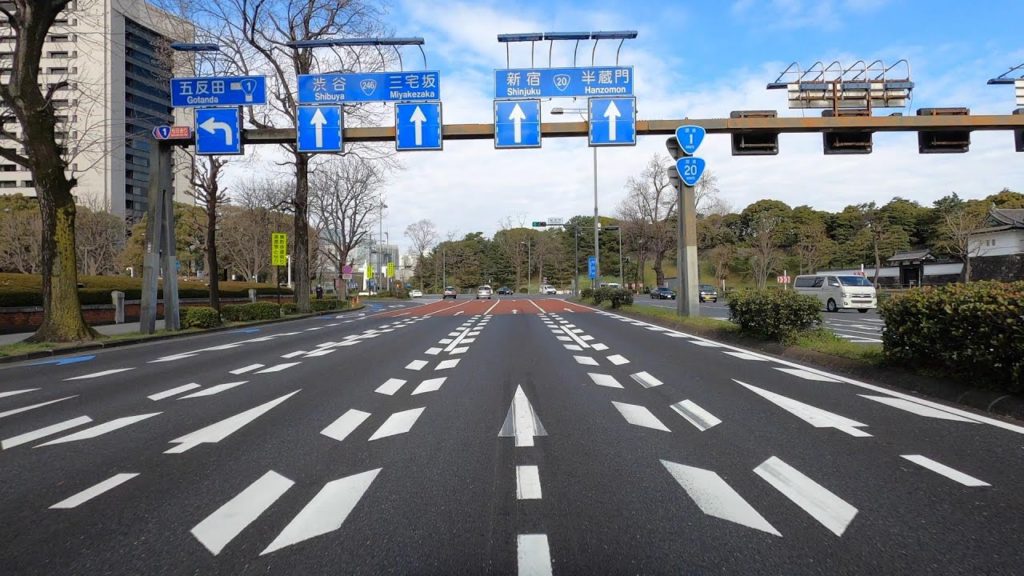#tokyosmith #drive #japan
We upload new videos a few times a week.
Don’t forget to subscribe to our channel so that you don’t miss the new episodes, and if you like our videos, please like, comment and share!
Youtube:
We are also on Twitter and Instagram.
Twitter:
Instagram:
About Shinjuku
Neon-filled Shinjuku is where Tokyo goes to have fun
With the dubious distinction of being home to the busiest train station in the world, Shinjuku has so much to offer. From modern high rises to green oases, it’s a mecca for shopping, eating and relaxing.
Shinjuku Station is officially the busiest transport hub in the world. When it was registered by Guinness World Records in 2007, an average 3.64 million people used Shinjuku Station per day.
With 36 platforms, over 200 exits and another 17 platforms in five directly connected stations, it is labyrinthine. Never be so casual as to suggest meeting someone “outside Shinjuku Station”: JR, Keio, Odakyu, Toei, Tokyo Metro and Seibu all have stations within the Shinjuku Station complex, which also boasts underground malls, restaurants and cafes. Shinjuku is defined by its station.
As a result of all this human traffic, Shinjuku caters to all tastes and desires.
Major department stores including Isetan, Takashimaya, Keio, and Odakyu have flagship stores in Shinjuku. Kinokuniya Bookstore, Tokyu Hands, Bic Camera, Yodobashi and Labi all have a huge presence right in front of the station.
There are thousands of stores in the immediate vicinity, and if you stroll in any direction from the station, there are thousands more shops, restaurants, bars, clubs and movie theaters. Shinjuku has everything you want and much you didn’t know you needed.
Kabukicho is where the party happens. Often called the town that doesn’t sleep, more accurately, it passes out for a couple of hours late morning.
Despite its sometimes sleazy reputation, it is a must-see destination for young people and foreign visitors and is becoming more family-friendly. With over 4,000 bars, restaurants, clubs and convenience stores, there is a lot to choose from in such a small area. Oddities like the Robot Restaurant , a giant Godzilla, the Samurai Museum and Thermae-Yu baths have made it a popular attraction. Golden Gai, Hanazono Jinja, and even Koreatown keep people coming back for more.
Shinjuku is also home to the Tokyo Metropolitan Government Office Building (Tocho), which dominates the skyline. Even among the rest of the towers of south Shinjuku, Tocho stands tall. The views from the free observation decks are stunning, and they stay open until 11:00 p.m.
About Fuchu
Fuchū (府中市, Fuchū-shi) is a city located in western Tokyo Metropolis, Japan. As of 1 February 2016, the city had an estimated population of 261,488, and a population density of 8,888 persons per square kilometer. Its total area is 29.43 square kilometres (11.36 sq mi).
Fuchu City is surrounded by the abundant nature of the four seasons. Located in the western part of Tokyo, Fuchu is also known for its many remaining historical areas and for its location along the Koshu Kaido Road that flourished as an important highway during the Edo Period (1603–1868). It is a mystical place where fresh, flowery scenery coexists with historical architecture. We invite you to visit “The Spiritual City, Fuchu”.
Fuchu was once the location of the kokufu (provincial capital) of ancient Musashino Province; one can find many historical sites here, such as the Kokufu Ruins and ancient burial mounds. Fuchu flourished during the Edo Period as a waystation for people to come and go along the Koshu Kaido Road, an important path that connected Edo to Kai Province (modern-day Yamanashi Prefecture).
Fuchu Gourmet Guide
Guide map of Fuchu (in the French language)
Fuchu est entourée par la généreuse nature de ses quatre saisons. C’est aussi une ville avec une histoire
qui a prospéré depuis toujours comme un centre politique, économique et culturel.
About Koshu Kaido
The Kōshū Kaidō (甲州街道) was one of the five routes of the Edo period. It was built to connect Edo (modern-day Tokyo) with Kai Province in modern-day Yamanashi Prefecture, Japan. The route continues from there to connect with the Nakasendō’s Shimosuwa-shuku in Nagano Prefecture.[1] Many feudal lords from Shinano Province made use of the road during sankin-kōtai, including those from the Takatō, Suwa and Iida domains.
The Kōshū Kaidō’s route is followed closely by the modern Route 20.


AloJapan.com